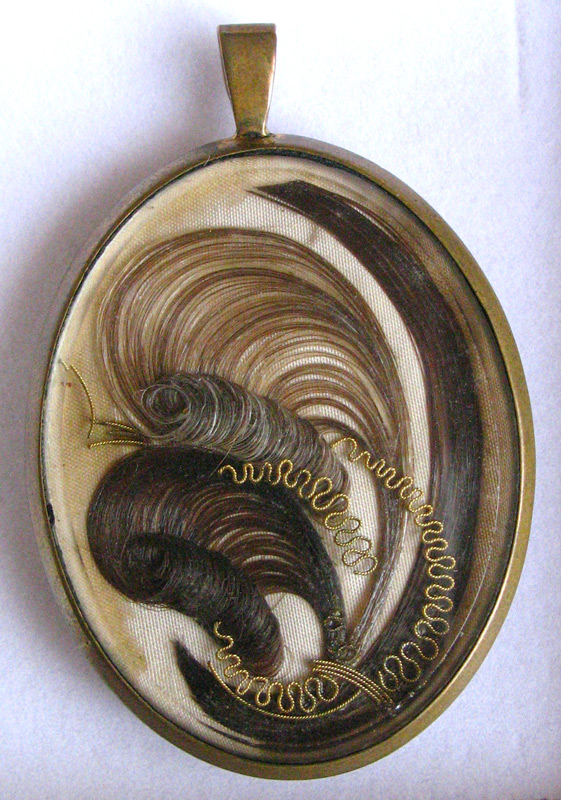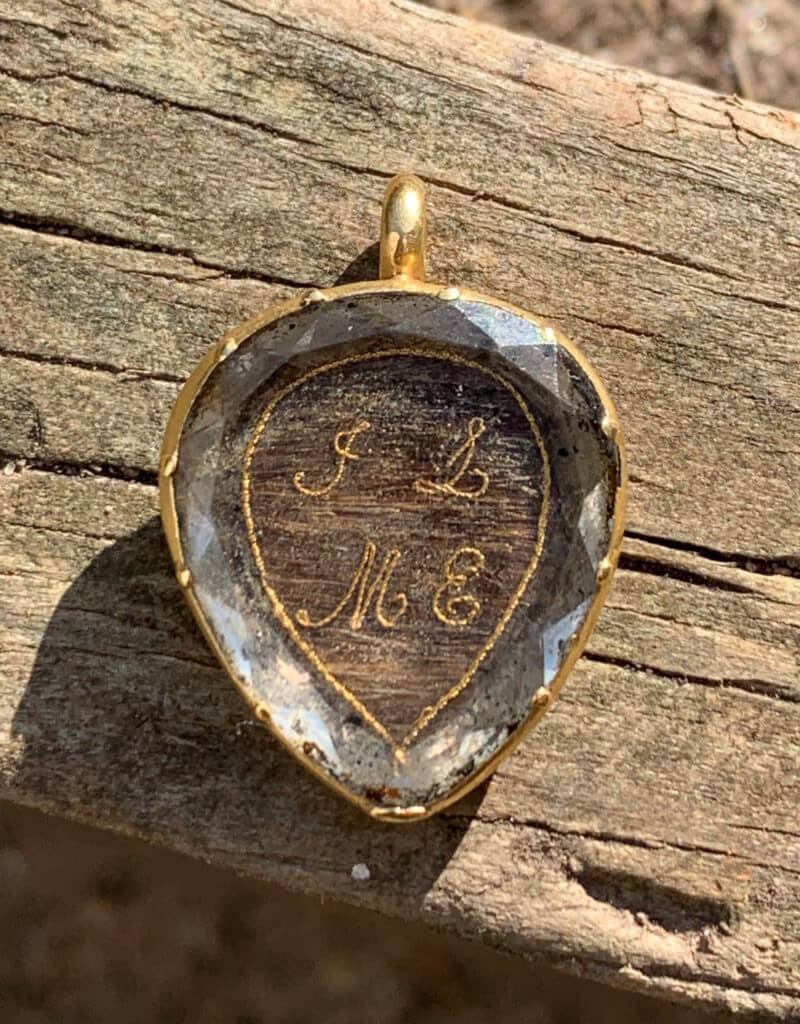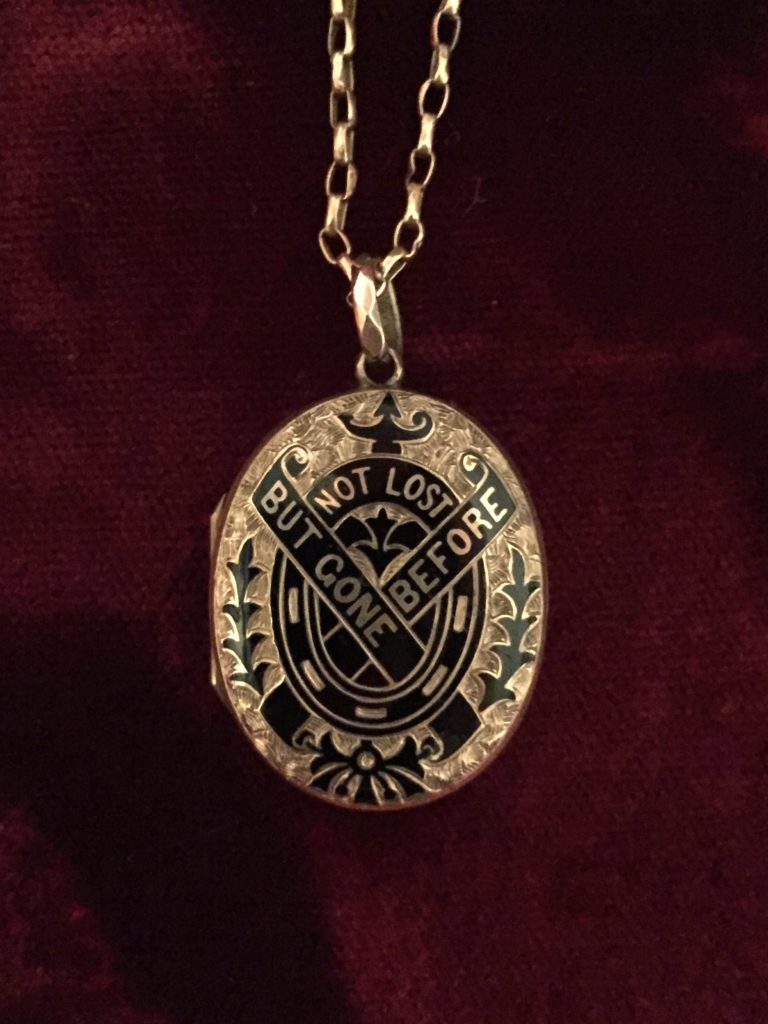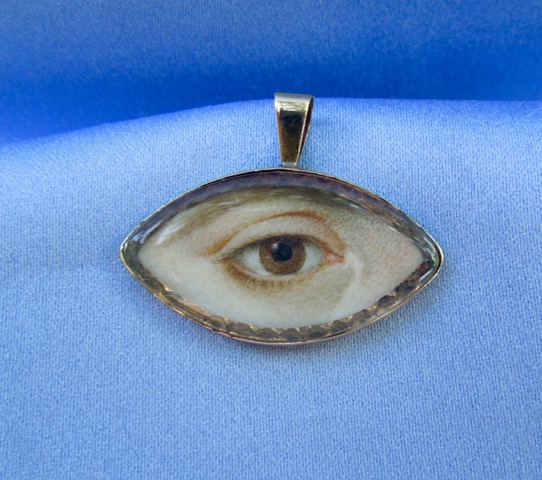Simple But Effective, Watercolour Hairwork Pendant
Often when critiquing a Neoclassical piece with art, you’ll often find me reference the quality of the painting itself. Be it colour or sepia, there’s often a wide degree of variation between pieces in how they are depicted.
Much of the variation comes form the instant nature of the art itself. Remember that memorial and sentimental art is very immediate. If a lover is parting on short notice and a token of regard and affection has to be bought or commissioned without pre-planning, then the jewel is born of necessity. If there is a financial issue that causes the person purchasing the piece to have to choose an item of lesser quality or even if the person wishes to embed their own art into a piece (such as their own placement of hairwork in a locket, photograph, personal memento), then it’s not so much about the level of the execution, but comes back to the personal nature of what the piece is for. Yes, these pieces can be naive, but they can also be unique and beautiful individuals, pieces that have no precedence and never will again. It captures the moment between people, that instant affection inside a jewel.
Which leads us to this piece. This particular painting is obviously very instant. Detail to the piece is quite low considering the complexity of the depiction and yet the hairwork on the reverse is quite delicate, with the Albert curl and gold wire cipher. This is set in a low-grade pendant and underneath glass, so what can we make of it?
Firstly, the symbolism is rather simple and direct. There’s little other allusion to context outside of the ship sailing into the distance and the Neoclassical female pointing to it sailing away. The cliff, tree and surrounds merely act as scenery, rather than enhancing the piece with further sentiments. Note the figure of the female herself. Her hair is set in a more contemporary style for the time, rather than harkening back to the Ancient Grecian idealised style, though her dress is classical in intent, but the flowing lines and folds of the dress are lost to simple strokes of the artist. The face is rather simple, the eyes are simple black dotes, as is the nose, yet the artist has taken care to shade the piece and give her more contrast than the art is perhaps worthy of. Then there is the ship sailing away, note the inclusion of the flags and their colour.
The hairwork makes this piece easier to date and gives the naïve painting context. With its curl and attention to detail in the table-working, this piece stems from around the 1820s, a time when the Neoclassical style of large miniature paintings had been on the decline, with smaller, angular jewels and sharp, clean lines in enamel and stones/pearls surrounding hair mementos taking their place. Hence the instant nature of the painting or the lack of style can be understood as either being a primitive interpretation of the earlier styles, rushed for necessity, a personal sentimental gift or a pre-designed and cheaply bought token of affection.
Travelling miniaturists sold pre-designed miniatures to a public for lower prices and would customise scenes to either incorporate a loved one (say, a soldier’s face may be inserted into a piece during the Napoleonic Wars). If one were to consider this as well as the instant nature of the piece, the symbolism with the ship and the time it was created, then one may consider it to be stemming from the Wars of the time, however, this of course is supposition and the only truth can be told by the person who commissioned it.
Either way, the facts remain that it is indeed a curiosity, still wonderful to look at and entertaining to consider!








